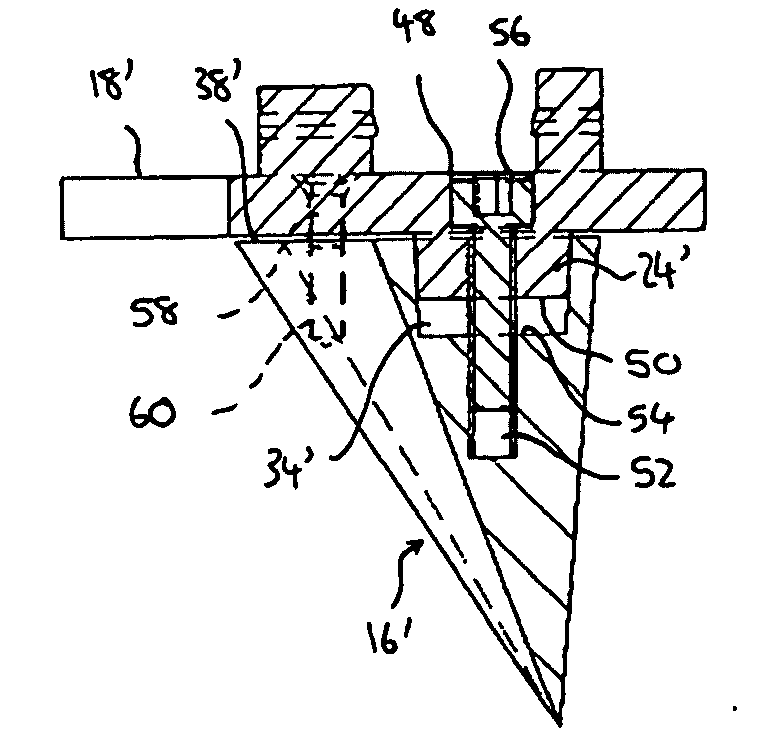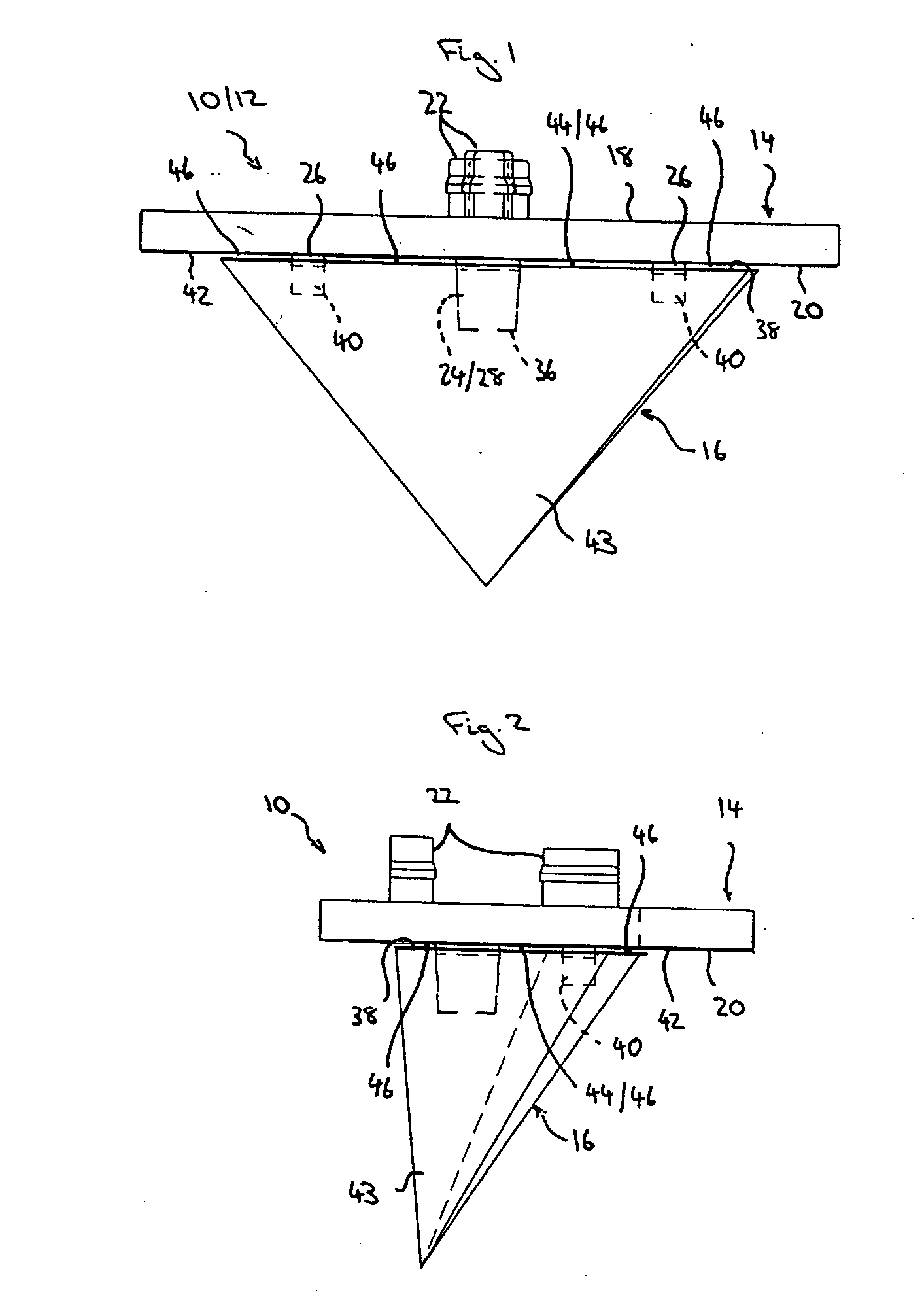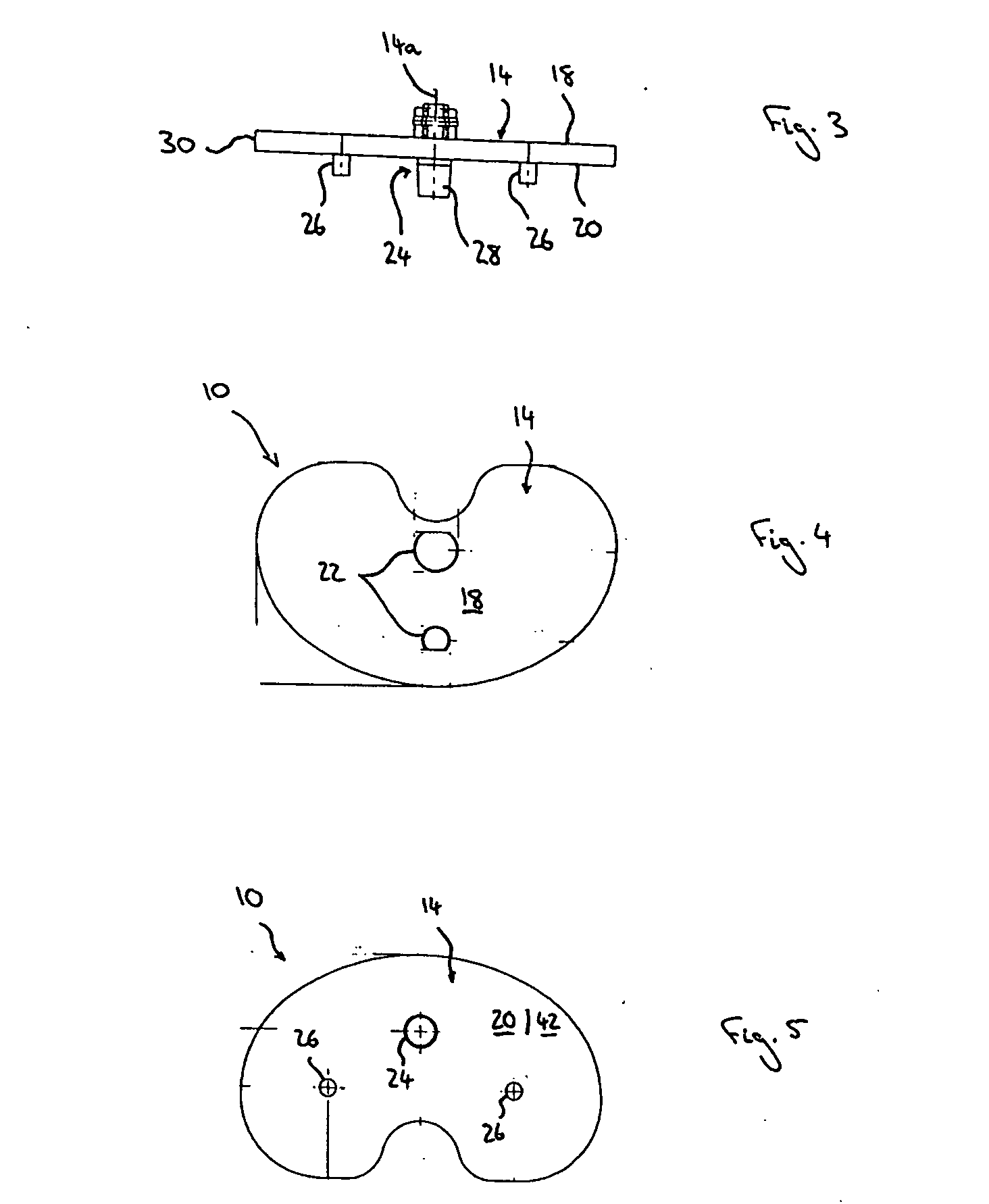Knee prosthesis
a technology for tibia and tibia, which is applied in the field of tibial components, can solve the problems of inability to remove the tibial platform and the stem or keel, titanium or cobalt-chromium alloy shards and swarfs undetectedly introduced into the body, and substantial damage to the surrounding bone of the tibia, so as to encourage growth and fixation of the tibia
- Summary
- Abstract
- Description
- Claims
- Application Information
AI Technical Summary
Benefits of technology
Problems solved by technology
Method used
Image
Examples
second embodiment
[0054] Referring to FIGS. 10 and 11, a tibial component is shown. Like references refer to like parts, and further description will be omitted.
[0055] In this embodiment, connecting spigot 24′ on inferior surface 20′ of tibial platform 14′ includes an axial through-hole 48 which opens out on superior surface 18′ of the tibial platform 14′ and distal end 50 of the spigot 24′. Socket 34′, provided in the upper surface 38′ of keel 16′ and dimensioned as previously described for accepting the connecting spigot 24′ as an interference fit, also includes a screw-threaded opening 52 in its bottom surface 54. A, typically anti-vibration, screw-threaded fastener 56 is thus be receivable in the axial through-hole 48 of the tibial platform 14′ and is engageable in the opening 52 in the bottom 54 of the socket 34′, thereby securely and releasably engaging the tibial platform 14′ and the keel 16′. This arrangement minimises the risk of loosening occurring between the connecting spigot 24′ and the ...
third embodiment
[0059] Referring to FIG. 12, a tibial component is shown. Again, like references refer to like parts, and further description will be omitted.
[0060] In this case, connecting spigot 24″ is provided on upper surface 38″ of keel 16″, and socket 34″, dimensioned as previously described for accepting the connecting spigot 24″ as an interference fit, is provided in inferior surface 20″ of tibial platform 14″. The connecting spigot 24″ is formed with a groove 62 adjacent to its distal end 50″. Preferably, the groove 62 is endless.
[0061] A through-hole 64 is formed through the anterior edge 66 of the tibial platform 14″ and breaks out into the socket 34″. The through-hole 64 is threaded to allow a, typically anti-vibration, screw threaded fastener 68 to be inserted into the tibial platform 14″. When the connecting spigot 24″ is received in the socket 34″, the fastener 68 projects into the groove 62 of the connecting spigot 24″, thus preventing separation of the tibial platform 14″ and the ...
PUM
 Login to View More
Login to View More Abstract
Description
Claims
Application Information
 Login to View More
Login to View More - R&D
- Intellectual Property
- Life Sciences
- Materials
- Tech Scout
- Unparalleled Data Quality
- Higher Quality Content
- 60% Fewer Hallucinations
Browse by: Latest US Patents, China's latest patents, Technical Efficacy Thesaurus, Application Domain, Technology Topic, Popular Technical Reports.
© 2025 PatSnap. All rights reserved.Legal|Privacy policy|Modern Slavery Act Transparency Statement|Sitemap|About US| Contact US: help@patsnap.com



